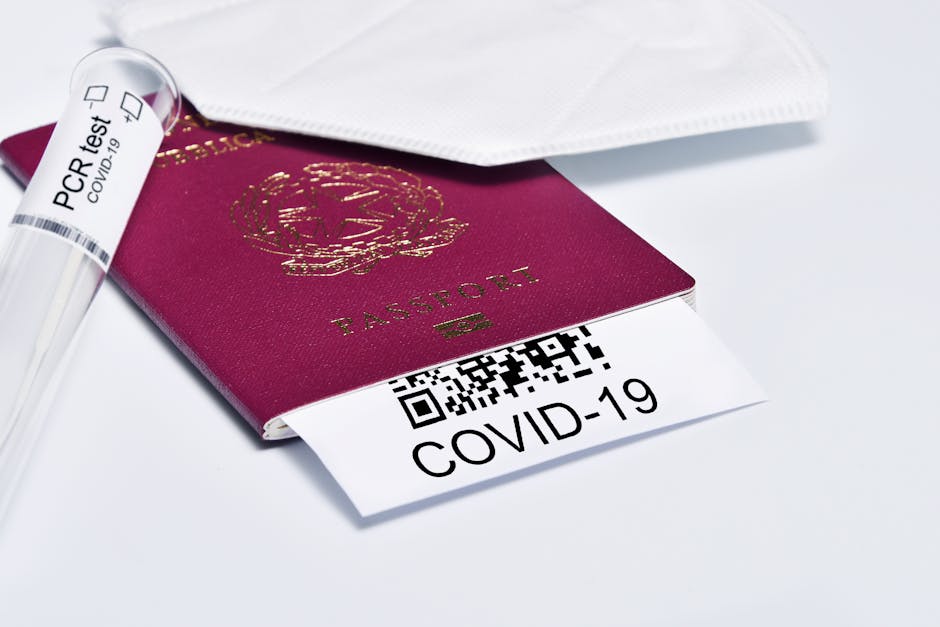I REMEMBER THE exact moment flying went from sky tranquility to high anxiety. I was sitting on a grounded plane in Rome’s Fiumicino Airport during an abysmal downpour. The pilot announced we’d be departing for New York in a few minutes—and that it would be a little rocky until we cleared the storm. That ended up being an understatement. “Want one?” the stranger next to me asked, passing over a bottle of Valium after noticing me gripping the armrest already. After that trip, stepping on a plane was never the same.
Turbulence. Go arounds. High-profile crashes. That upside-down landing. You don’t need to make it to the final round of Jeopardy! to guess that the number of Americans who say flying is “safe” or “very safe” has dropped while anxiety around flying is soaring. One poll even showed that 65 percent of people said news stories about plane safety incidents make them feel unsafe flying. In case you’re curious: the odds of dying in a car crash are about 1 in 95. Meanwhile the odds of dying in a plane crash are 1 in 13.7 million, according to the very smart people at MIT.
“Actual fear of flying refers to a grab bag of related conditions, including specific phobia of flying, panic disorder, agoraphobia, claustrophobia, post traumatic stress disorder, and generalized anxiety disorder,” says JonathanB. Bricker, Ph.D., founder and leader of the Health and Behavioral Innovations in Technology (HABIT) research group at the Fred Hutchinson Cancer Center and affiliate professor in psychology at the University of Washington. But a sudden onset of flight anxiety isn’t a clinical diagnosis and can affect anyone—even after years of smooth sailing at 35,000 feet. People who unexpectedly feel like their blood pressure spikes at the thought of boarding a plane fall into two camps: The first is people with a history of anxiety; the second is people who had a bad experience in the air, like a rough landing that people clapped and kissed the ground after.
No matter which camp you’re in, there are tools that can get you through your next flight. Before you resign yourself to throwing back a few at the airport lounge prior to boarding or popping a sleep aid once you’re in your seat—both of which experts say can lead to rebound anxiety and worsen your mood once they wear off—consider these far more reliable solutions for overcoming high flying anxiety.
Before The Flight
You need a plan—and white-knuckling the flight ain’t it. Experts say that leads to anticipatory anxiety, which can make the actual flight even more terrifying. The gold standard for treating flight anxiety is exposure therapy—a cognitive based therapy process of gradually exposing you to the thing you’re afraid of. “It’s a deeply-researched, evidence-based approach to teaching people how to reduce avoidance, tolerate distress and reframe catastrophic thinking in a sustainable way,” says Luana Marques, Ph.D., an associate professor of psychiatry at Harvard Medical School and author of Bold Move: A 3-Step Plan to Transform Anxiety into Power. But there are cheaper and possibly less scary options, too, if you don’t have a formal diagnosis of fear of flying, a panic disorder, or something else your insurance would cover.
“If I’m going to go run a marathon, I need to build up to it— it’s the same with overcoming fear of flying,” says Paul Tizzard, a coach who co-founded Flying Without Fear and Lovefly in association with Virgin Atlantic. Both programs have helped more than 30,000 people with their fear of flying. He recently developed a 30-day, 10-minutes a day, online program to help people become more confident flyers. “Information is power for nervous flyers,” says Tizzard, whose course demystifies everything from what creates turbulence to how flight crews are trained to handle even unlikely situations midair, and why you should trust your pilot. There aren’t any scientific studies on it, but Tizzard says every graduate of the course has experienced a decrease in fear of flying symptoms. Experts say it could be helpful because of the gradual exposure to flying over a monthlong period.
During The Flight
Anything you can do to regulate your nervous system and prevent your heart from pounding like you’re running sprints can work to your advantage. Think: box breathing (inhaling for four seconds, holding your breath for four seconds, exhaling for four seconds, holding your breath for four seconds and then repeating), progressive muscle relaxation or even mindfulness and meditation. They can all help prevent anxiety from escalating while you’re in the air.
If you’re bold enough, this is one of those situations where doing the exact opposite can help as well. Depending on their diagnosis, Marques encourages her patients to give in to the sensations of their anxiety. “They will rise and fall naturally if we don’t interfere with them,” she says. “Instead of trying to control a racing heart or shallow breath, I encourage people to ride the wave. It’s called interoceptive exposure. When you stop resisting the feelings, you build confidence and teach your brain that these sensations aren’t dangerous.”
Social support, like letting the flight attendant know you’re anxious or even asking strangers on Reddit to track your flight and DM you while you’re onboard, might make you feel safer. (Yes, it’s a thing with daily requests posted from Reddit users and multiple responses from strangers who watch their flight for them). The trouble is, you’re depending on others to calm you. “It can keep you stuck in a cycle of fear,” says Marques. “Your brain learns to rely on external safety cues rather than building internal tolerance for discomfort.”
After The Flight
Don’t keep hitting rewind and play on a difficult flight like a fight scene in your favorite movie. “Many people replay the experience, focusing on what went wrong or what could have happened,” says Marques. “I ask patients to instead collect evidence of success: Did you fly, even with discomfort? Did you stay on the plane? That’s what matters. Growth comes from approach, not avoidance, even if it’s imperfect. Discomfort is normal. The real win is showing up anyway.”
As for me, meditative practices saved the day. I eventually figured out that the more time I spent focusing on my breathing and letting thoughts drift away like clouds during takeoff, the less time I had to focus on the sound of the wheels retracting or deeply feel every little air pocket as we gained altitude. Tons of Tizzard’s clients have found success as well. “One man who had avoided flying for 30 years recently flew from Europe to the U.S. to visit his adult son,” says Tizzard, who recalls that the son was so shocked he jumped into his dad’s arms when he saw him. “The son asked, ‘How did you get here? You don’t fly!’” Thanks to Tizzard, now he does.
As the former health director at Family Circle magazine, Lynya developed content to improve the well-being of its 18 million readers. She’s worked as an editor at Glamour, Essence, Seventeen, Heart & Soul, Parenting and more. She also co-edited ESSENCE’s The Black Woman’s Guide To Healthy Living. She received her B.A. in English from Harvard University, integrative health training at Duke, and plenty of life lessons in her hometown of New York City.



